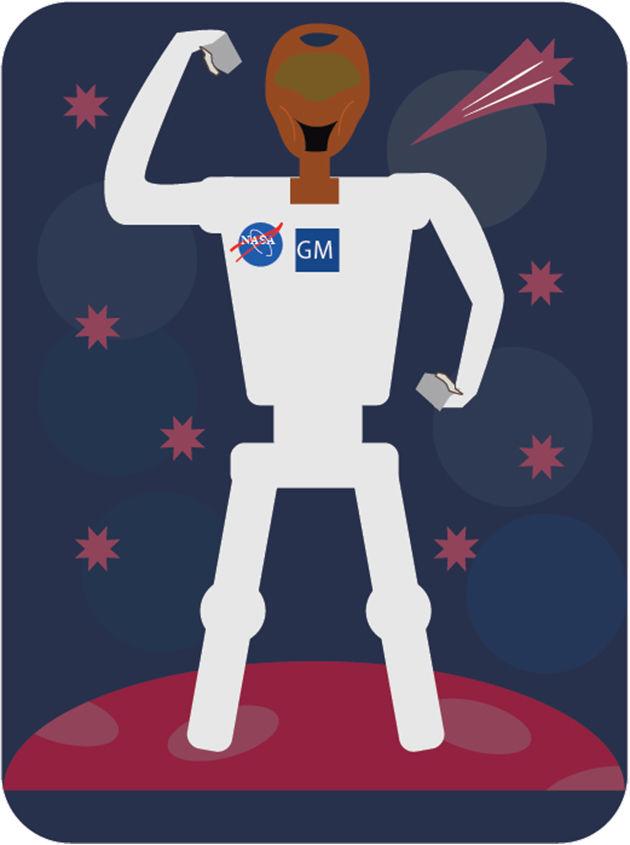It won’t be too long before robots are a part of everyday life on Earth, but Texas A&M is working with NASA to design a robot which will assist astronauts in space.
Dezhen Song, professor of computer science, and his graduate student Shu-hao Yeh are collaborating with NASA’s Johnson Space Center to create localization mapping algorithms for a robot that will one day be sent into space. The robot — better known as the Robonaut — will help astronauts with simple tasks to save time and boost effectiveness, such as holding items, moving objects and retrieving tools.
The final goal of for the Robonaut is to make it fully autonomous to help astronauts be more efficient while working in space.
“Our ultimate goal is try to make Robonaut, make it from [a] mobile robot to an autonomous robot,” Shu-hao said. “We want it to navigate itself, given the map of the space station. Of course astronauts in a space station can handle more tasks, [but] I think it benefits in efficiency and also safety.”
One goal of this project is to reduce the human risk factor when astronauts operate on the outside of the space station. Song said they are programming the Robonaut to perform simple tasks, but in the future, it could be improved to do more complicated jobs humans do today.
“Right now most of the task the Robonaut will be doing will be [picking] and [placing] things, moving things around, helping people with the simple task like sorting shelves and retrieve items,” Song said.
Going into space with a Robonaut as opposed to another astronaut does have benefits. Both Song and Shu-hao pointed out how it could save time, money and energy.
“The biggest benefit is one of the safety things, humans always need life support system when you survive in space,” Song said. “It’s very demanding and so costly sending a human there. [Humans] have probably eight-to-12-hour day for working, but robot does not have that limitation … Let humans do more important things, let robot take care of simple things. Then they be more effective and efficient when it comes to space task.”
Although the Robonaut could be ready in as little as a couple of months, Song said the project has many steps and getting the Robonaut to be “fully operational” is a relative term; there is always something more to be done.
Song said he is optimistic about their project and it will impact the future of space exploration and society in a positive way.
“We feel we have a good place to make our technology working, and also make it have a positive impact on society,” Song said. “If it functions according to our plan, it will make Astronaut life easier. Also, lessons we learn help us build a better, cheaper robot for people live on ground.”
A&M, NASA partner to design ‘Robonaut’
March 27, 2017
Photo by Graphic by Rachel Grant
Texas A&M is working to design a robot to assist astronauts in space.
Donate to The Battalion
Your donation will support the student journalists of Texas A&M University - College Station. Your contribution will allow us to purchase equipment and cover our annual website hosting costs.























